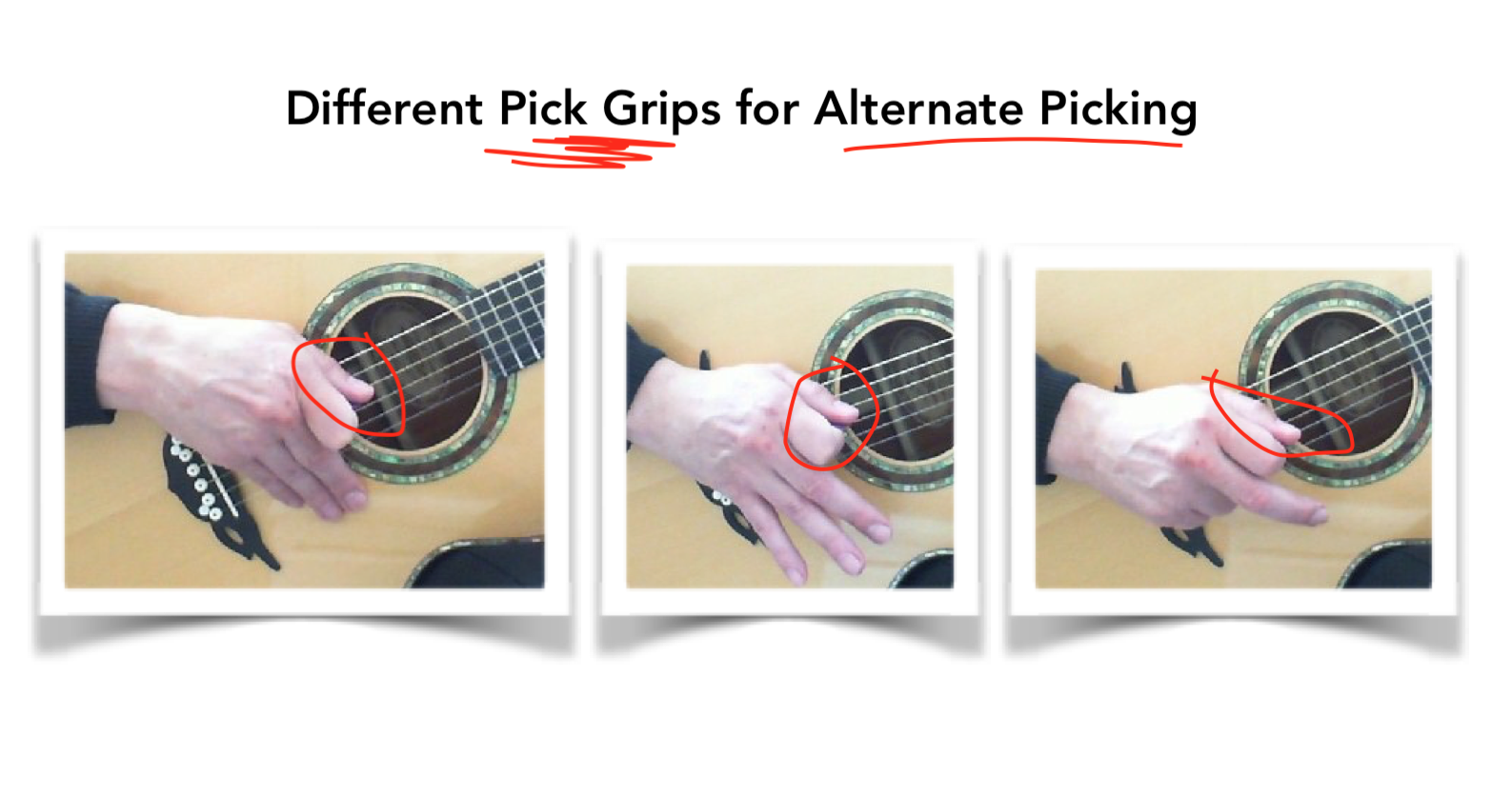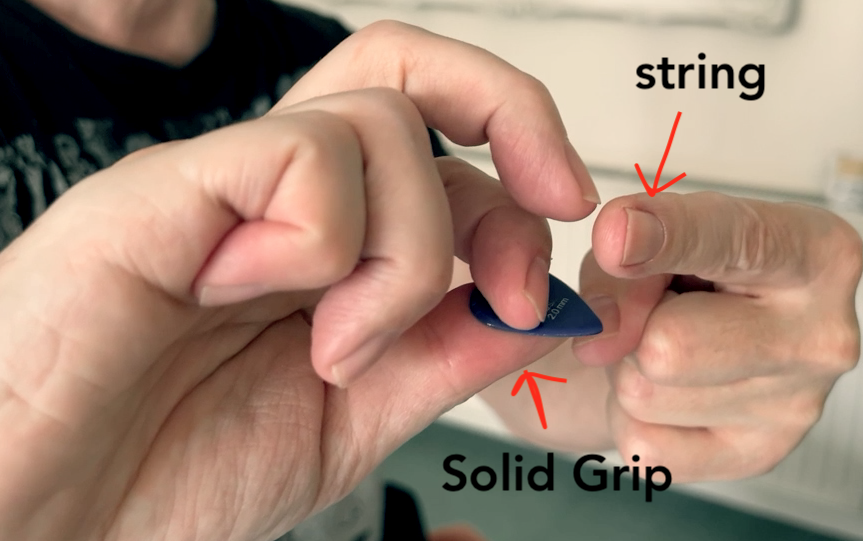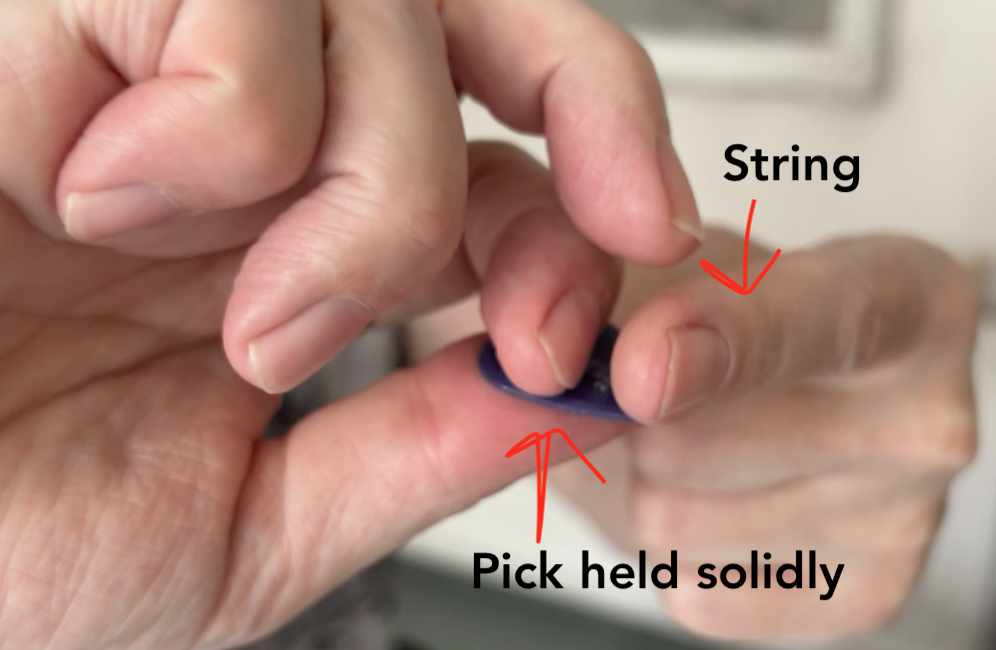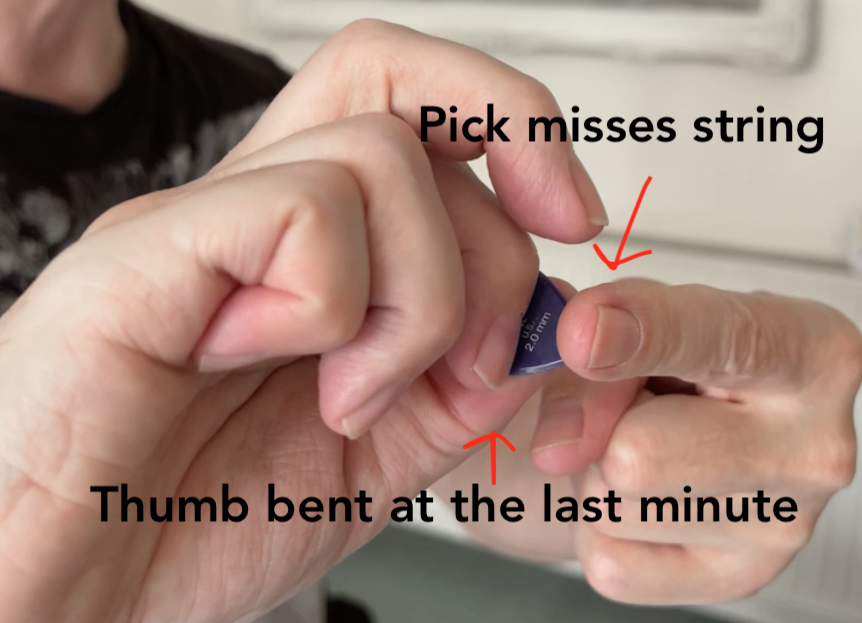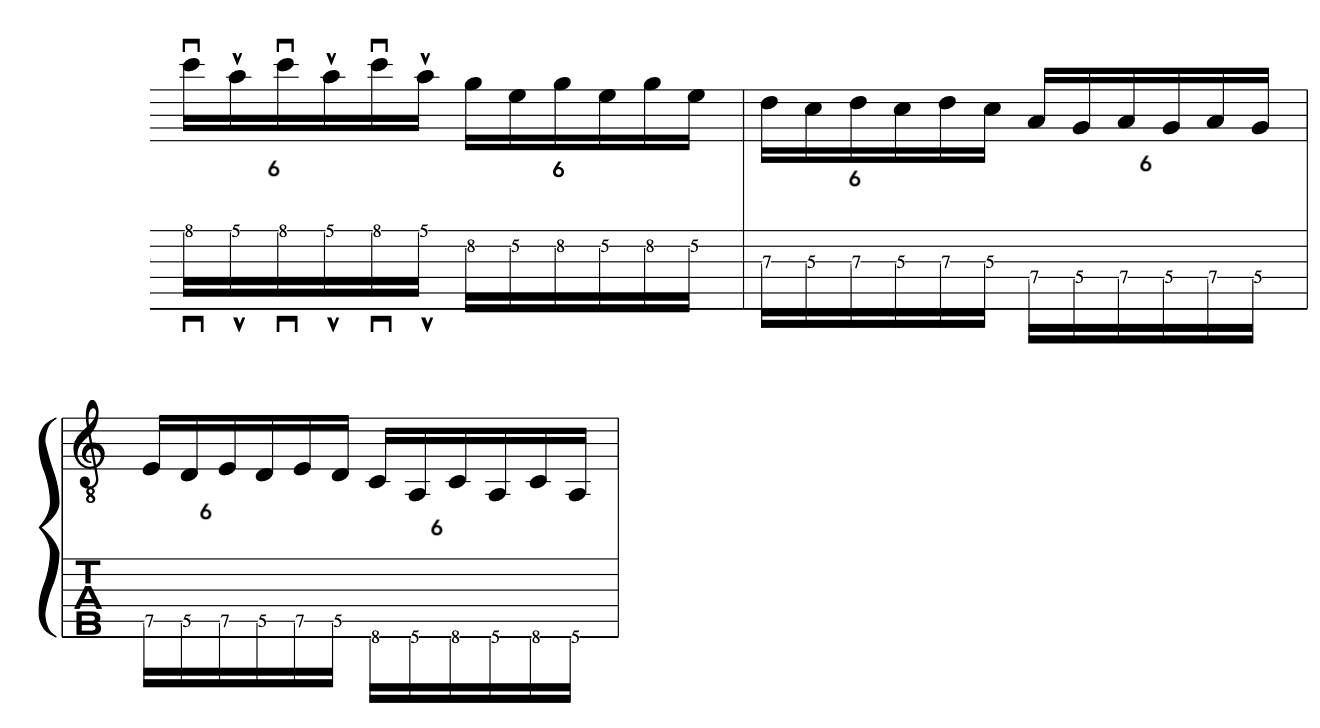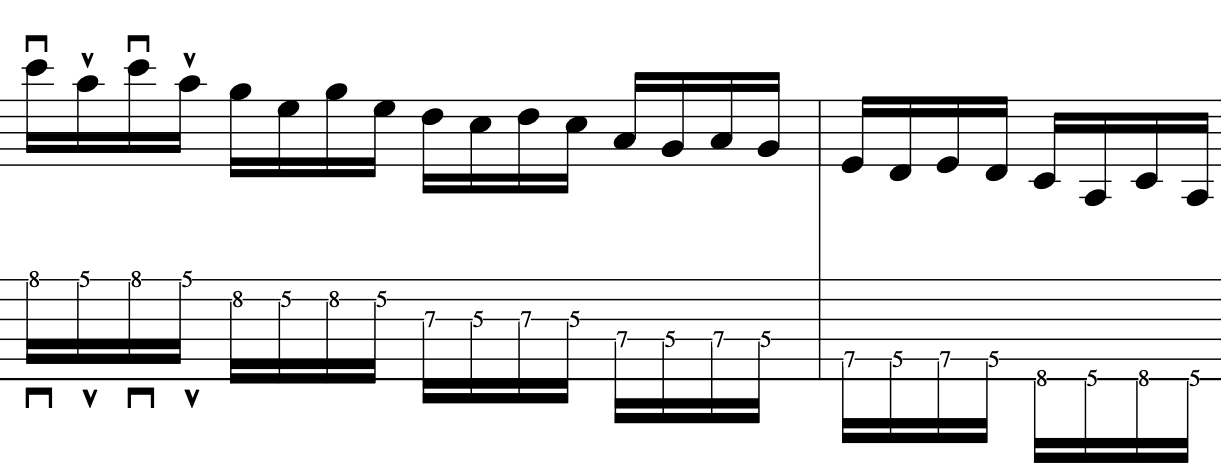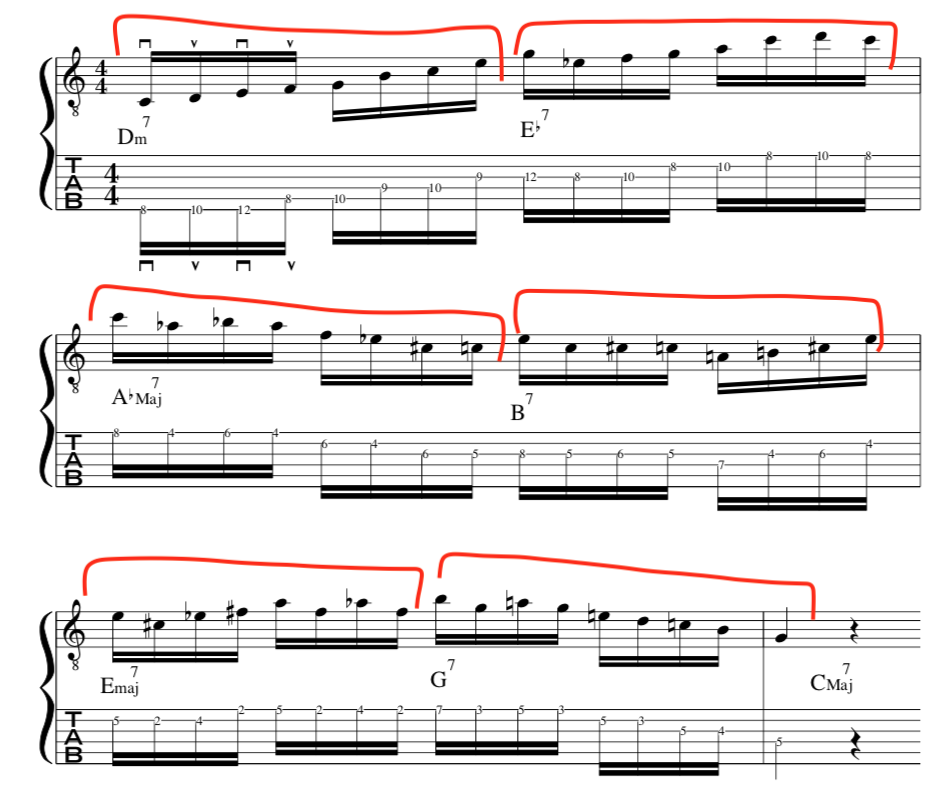
IMPORTANT: Please watch the video above for detailed info:
Hi Guys,
Today, a quick look at using groups of 6 notes for double timing in Jazz/Fusion.
Although these are sextuplets I am using them as a double timing musical tool and hence thinking of them slightly differently. This is because I am using a tempo marking of 100Bpm.
Why would I do this?
The reason being – Around this tempo demisemiquavers or 32nd notes might be too quick to play and offset the rhythm too much:

and 16th notes [tetrachords] may be too draggy and not pushy enough.
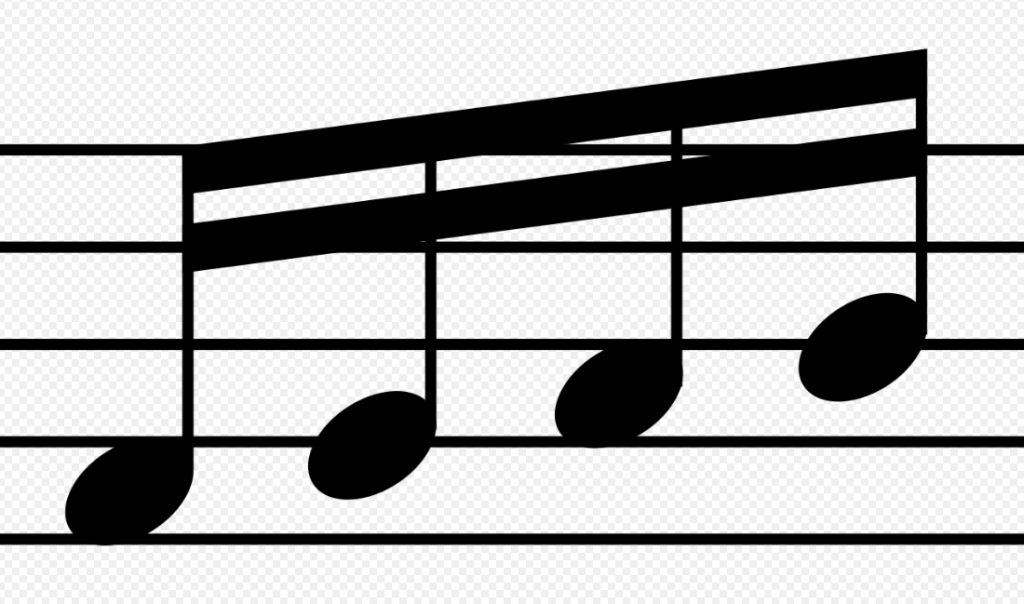
So, grouping 6 notes together over [1 crotchet] or 1 quarter note works really well rhythmically for clear cut phrasing. This is the sort of thing Al Di Meola or John McLaughlin would do.

You can count this how you want. Below are some common examples.
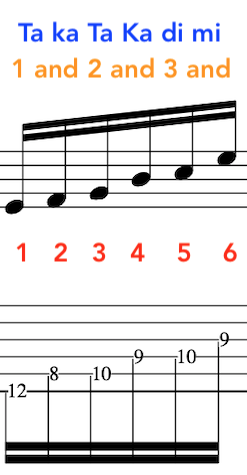
In order to get forward momentum and shift the grouping along it is a really good idea to “Accent” the third note in each six note grouping: This also gives you a reference point and avoids muddying the groupings of notes.
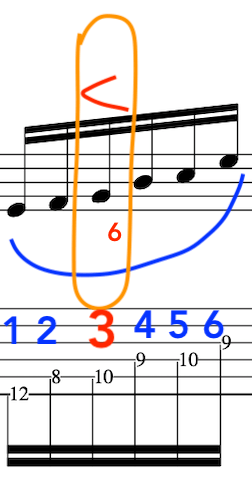
EXERCISE 1:
Here is the first exercise starting on a down stroke with strict alternate picking:
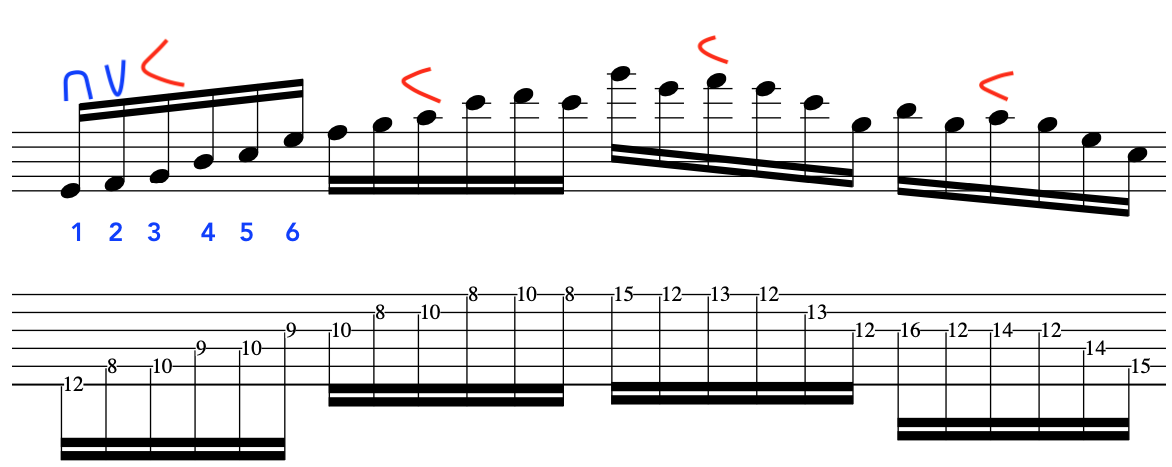
EXERCISE 2:
In the next exercise the second part goes the other way on the guitar fingerboard.
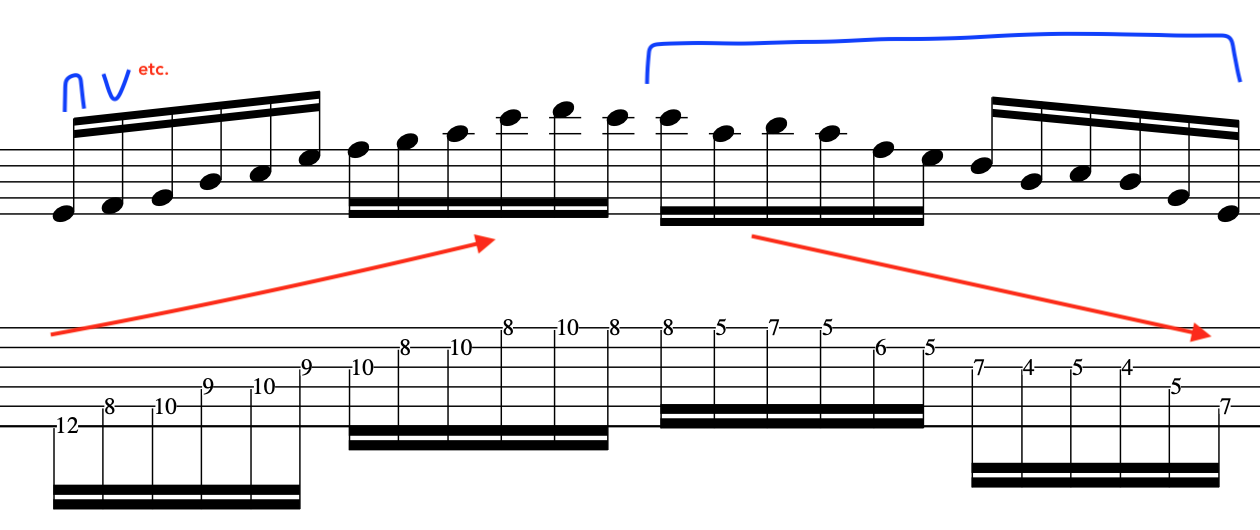
EXERCISE 3: EXTENDED LONG LINE:
This is an extended exercise with strict alternate picking : Remember to count the groupings as you play to begin with so that you internalise them.
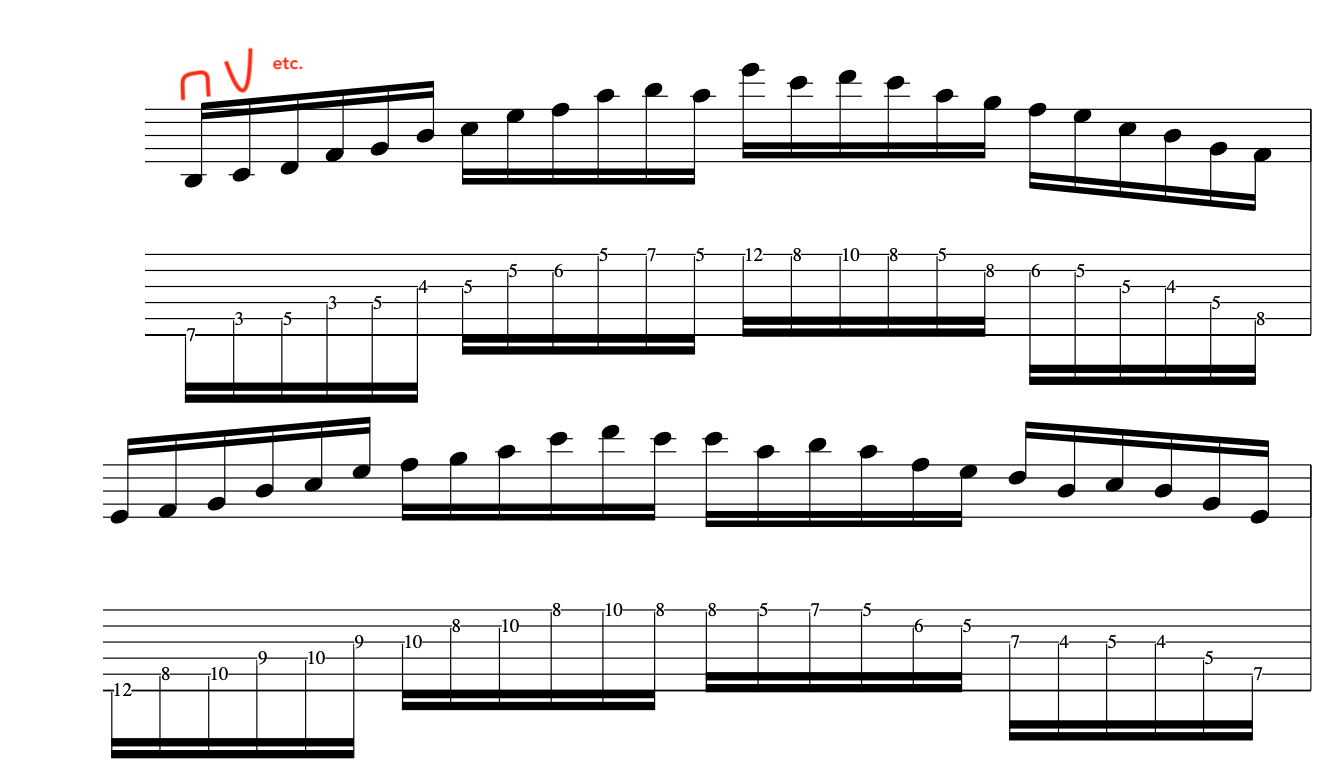
PDF DOWNLOAD:
IF THIS LESSON WAS OF USE TO YOU THEN PLEASE SUBSCRIBE TO US BELOW ON YOUTUBE, THANKS!

